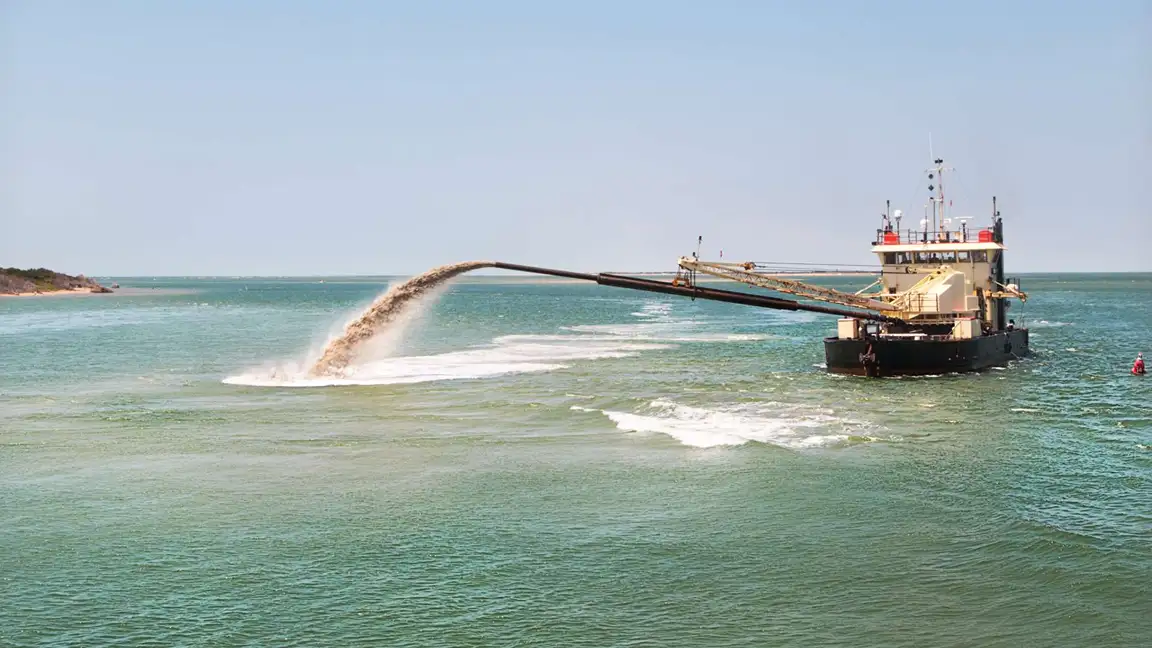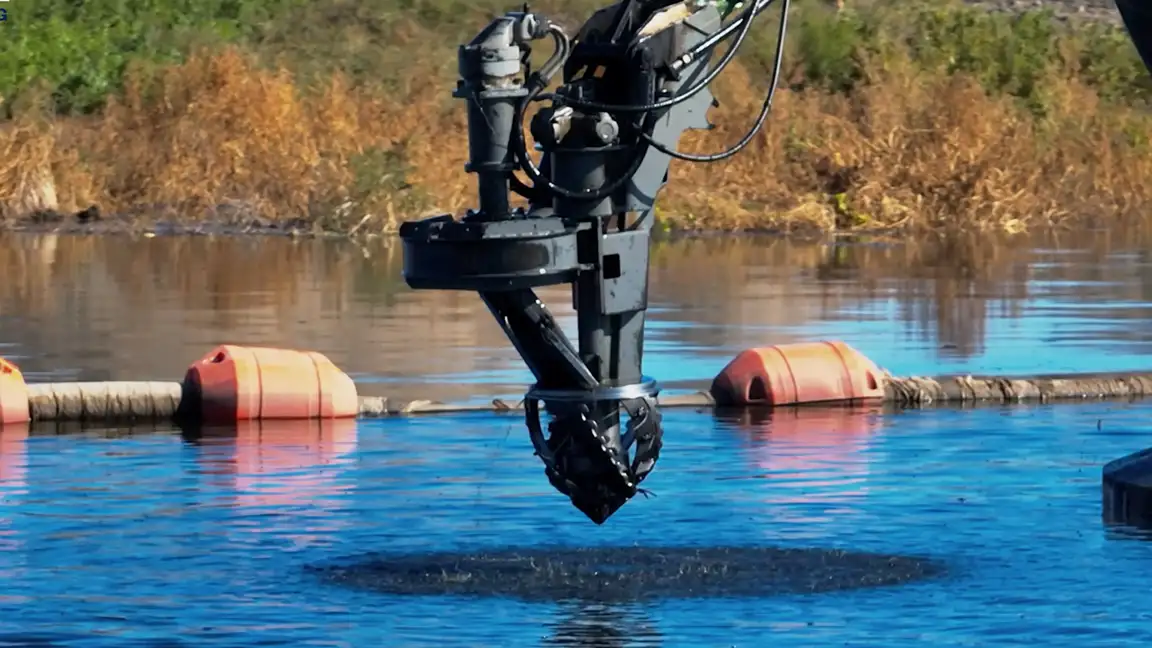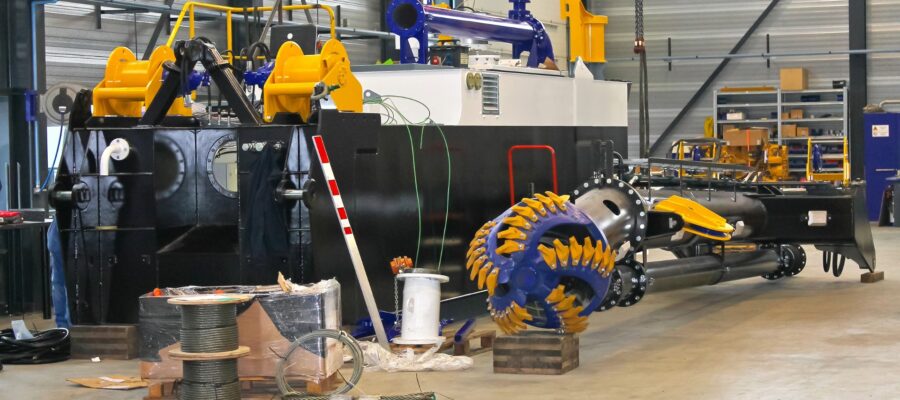
Introduction
When it comes to dredging operations—whether for construction, mining, or environmental cleanup—the right equipment can make all the difference. For many contractors and project managers, dredge pump rental offers a practical and cost-effective alternative to purchasing heavy machinery outright. It allows teams to scale up operations quickly, stay within budget, and access the latest pump technology when needed.
However, not all equipment is created equal. Choosing the wrong dredge rental can lead to delays, inefficiencies, and unexpected costs. Understanding the types of pumps available, how they perform in different environments, and what to look for in a commercial dredge pump rental provider is essential to success.
This guide covers everything you need to know before you rent a dredge pump. We’ll explore key technical considerations, project-specific requirements, cost breakdowns, and expert tips for evaluating dredge rental companies. Whether you’re new to the industry or seeking ways to streamline your next job, this article will help you make informed decisions and get the most out of your rental experience.
Understanding Dredge Pump Rental
What is a Dredge Pump?
A dredge pump is a specialized piece of equipment designed to transport water and solid particles, such as sand, gravel, or sludge, from one location to another. These pumps are essential in a wide range of dredging operations, including:
- Harbor and waterway maintenance
- Land reclamation
- Coastal protection
- Mining and excavation
- Industrial waste removal

Dredge pumps can be powered by diesel or electric engines and are available in several configurations, including submersible, booster, and hydraulic models. Choosing the right setup often depends on the specific application and material being moved.
For many projects, dredge pump rental provides a cost-effective and flexible alternative to purchasing. Whether it’s a short-term need or a large-scale undertaking, businesses benefit from having access to the right equipment without the long-term commitment.
If you’re exploring dredge rental options for your next job, it’s essential to work with providers who offer tailored solutions. A reliable commercial dredge pump rental service ensures you get high-performance equipment suited to your project’s demands while minimizing downtime and operational costs.
Why Rent Instead of Buy?
Dredge pumps are capital-intensive machines that require a significant upfront investment, ongoing maintenance, and trained operators to run efficiently. For many businesses and municipalities, renting offers a more practical and cost-effective solution, particularly in situations where:
- The need for dredging is temporary or seasonal.
- Project locations, scopes, or material types frequently change.
- Storing and maintaining owned equipment is impractical or costly.
- You’re evaluating performance before committing to a full purchase.
Opting for a dredge rental can provide valuable flexibility and reduce financial risk, especially when the equipment is needed only for a short duration or for a unique application. With a commercial dredge pump rental, you gain access to modern, high-performance machinery, minimize the burden of ownership responsibilities, and benefit from expert support services—all while keeping operational costs predictable and under control.
Key Factors to Consider Before Renting a Dredge Pump
1. Project Scope and Requirements
The first and most important step in selecting the right dredge pump rental is to define your project’s specific needs clearly. Every dredging operation presents unique challenges, and the equipment must be tailored to those demands to ensure optimal performance and efficiency.
Consider the following key factors:
- Material Type: Are you dredging sand, silt, gravel, clay, or contaminated sludge? Each material has different properties that influence pump power requirements and wear resistance.
- Dredging Depth: Greater depths may call for pumps with higher suction capacity or the addition of booster stations to maintain performance.
- Discharge Distance: The longer the distance the slurry must travel, the more powerful and efficient your pump setup needs to be.
- Environmental Conditions: Is the dredging site freshwater, saltwater, or within a sensitive ecological zone? This can affect equipment selection, materials of construction, and regulatory requirements.
By understanding your project’s specific scope and technical requirements, you can select a dredge pump that aligns with both operational demands and environmental constraints, helping you avoid underpowered systems or unnecessary oversizing that increases costs and complexity.
2. Pump Specifications
The heart of any dredge rental decision lies in the specifications of the pump itself. Understanding these technical details ensures you select the right equipment for optimal efficiency, performance, and reliability.
Here are the main features to evaluate:
- Flow Rate
Measured in gallons per minute (GPM) or cubic meters per hour, this determines how quickly water and solid materials can be transported.
A higher flow rate is essential for large-scale dredging or time-sensitive operations. - Head Pressure
A measurement of the vertical height the pump can push material, usually in feet or meters.
This directly impacts how far and how high the dredged material can be transported—critical for long discharge distances or uphill pumping. - Horsepower
Refers to the pump’s power output. Higher horsepower provides more force and capacity but typically results in greater fuel or energy consumption.
Choose based on material density, the required flow rate, and total dynamic head. - Suction Diameter
This determines the size and volume of material that can be drawn into the pump at once.
Larger diameters are more effective for coarse debris, rocks, or bulky solids, while smaller diameters are better suited for fine materials like silt or sludge.
Matching these specifications to your site’s conditions—such as water depth, material type, and discharge layout—is essential to avoid underperforming equipment or costly over-specification. Consulting with a rental provider on these specs can help ensure you’re choosing the most efficient pump for your unique dredging project.
3. Pump Type and Technology

There are various types of dredge pumps available, each suited for different applications. Understanding the differences is key to choosing the right equipment for your dredge rental needs.
Hydraulic Dredge Pumps
- Use water pressure and slurry systems.
- Ideal for loose, fine materials, and high-volume projects.
Mechanical Dredge Pumps
- Use excavators or buckets for material collection.
- Better for compacted or debris-heavy environments.
Submersible Dredge Pumps
- Operate while submerged in water.
- Excellent for deep-water applications or low-access areas
Booster Pumps
- Used to extend discharge distance and maintain pressure
- Essential for large-scale dredging operations
When considering a dredge pump rental, it’s important to evaluate factors like delivery head, wear resistance, priming systems, and overall energy efficiency. These considerations help ensure your operation runs smoothly and cost-effectively.
For more complex or large-scale jobs, a commercial dredge pump rental may offer specialized equipment and support services tailored to your project’s specific requirements.
4. Rental Costs and Budgeting
Cost is a key consideration in any commercial dredge pump rental. Pricing structures can vary widely depending on several factors:
- Pump type and power rating
- Rental duration (daily, weekly, monthly)
- Included accessories (hoses, fittings, support systems)
- Operator or technician support
- Transportation and delivery fees
To budget smartly for your dredge rental, keep these tips in mind:
- Get a written quote that includes all potential costs
- Ask about discounts for long-term rental contracts.
- Clarify who is responsible for maintenance and repairs.
- Factor in fuel or electricity consumption.
While the upfront price of a dredge pump rental might seem competitive, it’s essential to consider the total cost of ownership across the entire project timeline. A well-planned budget, combined with a dependable rental partner, helps ensure your dredging operations stay on track and within financial limits.
5. Reliability and Equipment Condition
Reliable equipment is essential for minimizing downtime and keeping your dredging project on schedule and within budget. Mechanical failures can stall progress, increase costs, and jeopardize project timelines—especially in large-scale or environmentally sensitive operations. That’s why evaluating the condition and maintenance history of the pump is a critical part of the dredge rental process.
Here are key steps to take before signing a rental agreement:
- Ask for the maintenance history and service records to ensure the pump has been properly cared for over its operational life.
- Check the age, total usage hours, and visible wear on the pump to assess its overall reliability and expected performance.
- Request recent inspection or diagnostic reports to confirm the unit has been tested and is in good working order.
- Ensure the rental includes technical support or on-site assistance in case of breakdowns, operational questions, or installation needs.
A reputable dredge pump rental provider will be transparent about equipment condition and proactive in offering responsive support. Look for companies that follow a preventive maintenance schedule, offer fast access to spare parts, and provide detailed documentation for each piece of equipment.
Well-maintained machinery—paired with an experienced support team—is a strong indicator of a dependable commercial dredge pump rental partner. Choosing the right equipment and provider not only ensures smoother operations but also reduces risk and supports long-term project success.
Evaluating Rental Providers
Choosing the right dredge pump is only half the battle—the other half is selecting a dependable provider that can meet your project’s needs with reliability, responsiveness, and technical expertise. The success of your dredging project can often hinge on the quality of your commercial dredge pump rental partner. Here’s what to look for when evaluating potential vendors:
1. Experience and Reputation
- Look for companies with a proven track record in dredge rentals, especially those who have worked on projects similar to yours.
- Check online reviews, testimonials, and published case studies.
- Ask for client references or documented examples of past success in the field.
2. Technical Support
- Confirm whether the provider offers on-site field support or assistance with installation and setup.
- Ensure that replacement parts are readily available to minimize downtime.
- Inquire about training materials, safety guidance, or operational manuals that may be provided.
3. Equipment Availability
- Make sure the provider has a wide range of pump sizes, capacities, and types in stock to match your requirements.
- Look for modern, well-maintained, and efficient equipment options as part of your dredge pump rental.
- Ask about equipment upgrade cycles or the availability of specialty attachments or accessories.
4. Insurance and Liability
- Clarify who is responsible for covering damages, breakdowns, or equipment failures during the rental period.
- Review the insurance requirements and make sure they are clearly defined in the rental agreement.
- Understand the terms for emergency replacements or extended downtime support.
A professional dredge rental company will be transparent about its processes, offer a clear service-level agreement, and guide you through every aspect of the rental experience—from selection to operation and post-project support. Choosing the right provider helps ensure your project runs smoothly, on time, and within budget.
Commercial Dredge Pump Rental Use Cases

To understand the versatility of dredge pump rental, let’s explore a few real-world applications where temporary solutions deliver powerful results:
- Harbor Maintenance
Municipalities often turn to dredge rental to manage sediment buildup and keep waterways navigable. Seasonal dredge pump rental gives them the flexibility to scale operations without long-term investment. - Mining and Quarrying
Mining operators frequently use commercial dredge pump rentals to extract minerals from underwater sources. These pumps are durable and can be swapped out depending on the specific type of material, making dredge rental both practical and cost-effective. - Land Reclamation
Large-scale construction and infrastructure projects rely on dredge pump rentals to transport sand and silt from seabeds. This process supports the creation of new land areas and elevates existing terrain, making temporary rentals ideal for dynamic project timelines. - Environmental Cleanup
Eco-sensitive sites, such as wetlands or riverbeds, benefit from commercial dredge pump rental solutions using submersible pumps. These specialized systems allow for pollutant removal with minimal ecological disruption.
Whether you’re dealing with infrastructure expansion or environmental remediation, commercial dredge pump rental provides scalable, reliable performance suited for a wide range of industries.
Conclusion
Choosing the right dredge pump rental requires a balance of technical know-how, clear project objectives, and careful budgeting. From pump types and specifications to equipment reliability and provider support, every decision contributes to the overall success of your dredging operation.
By thoroughly evaluating your dredging needs and partnering with experienced providers, you can streamline operations, manage costs effectively, and achieve strong performance—without the long-term commitment of ownership. A well-planned rental strategy also gives you the flexibility to adapt to changing conditions and evolving project scopes.
Whether you’re handling routine maintenance or tackling a major infrastructure project, making informed rental decisions helps ensure your work is completed safely, efficiently, and on schedule.



Post a Comment